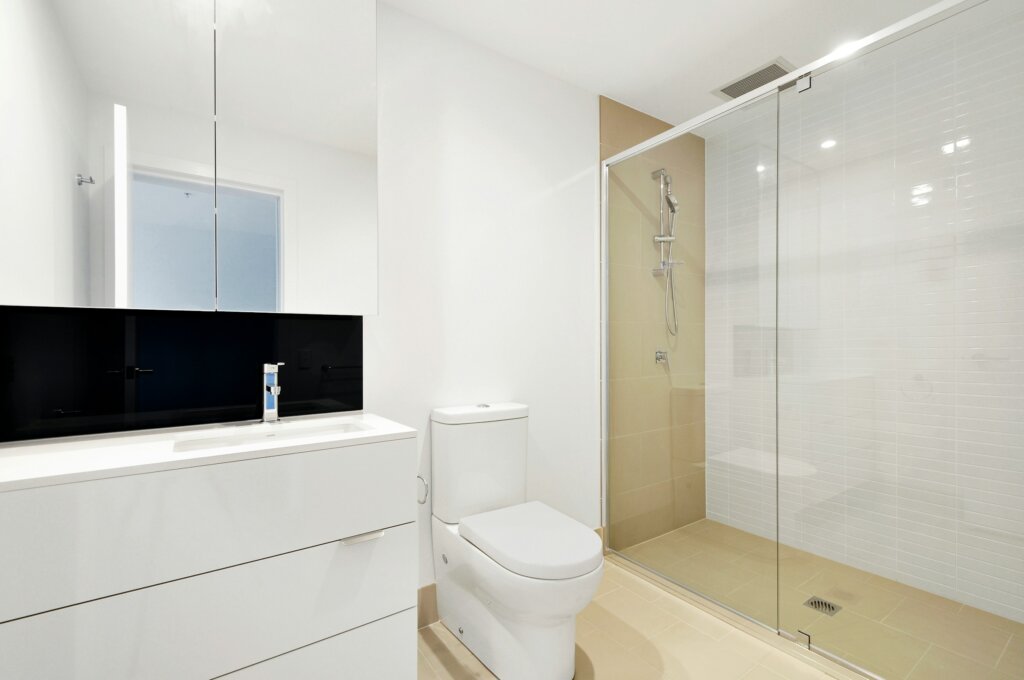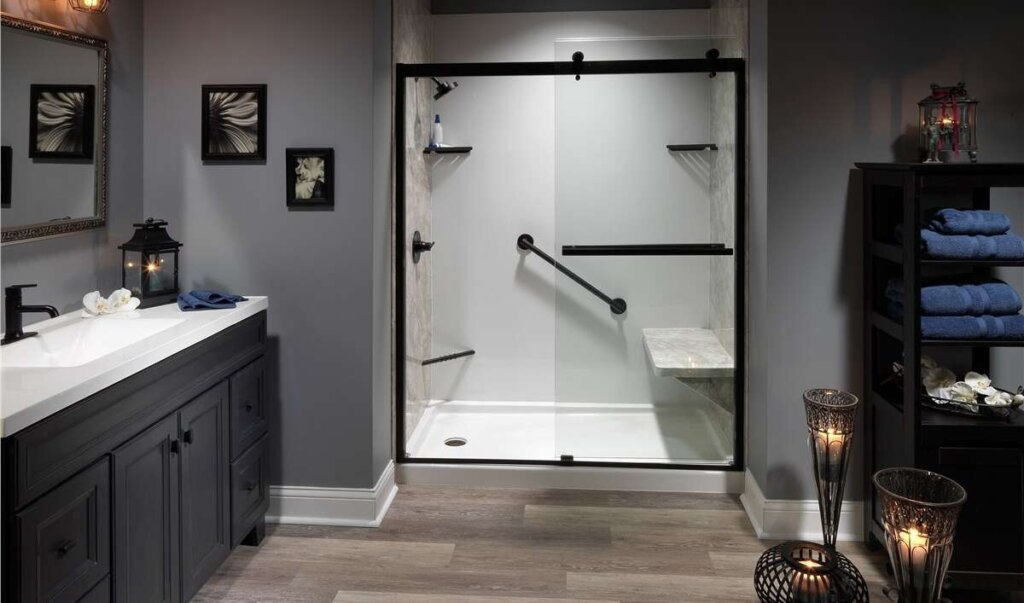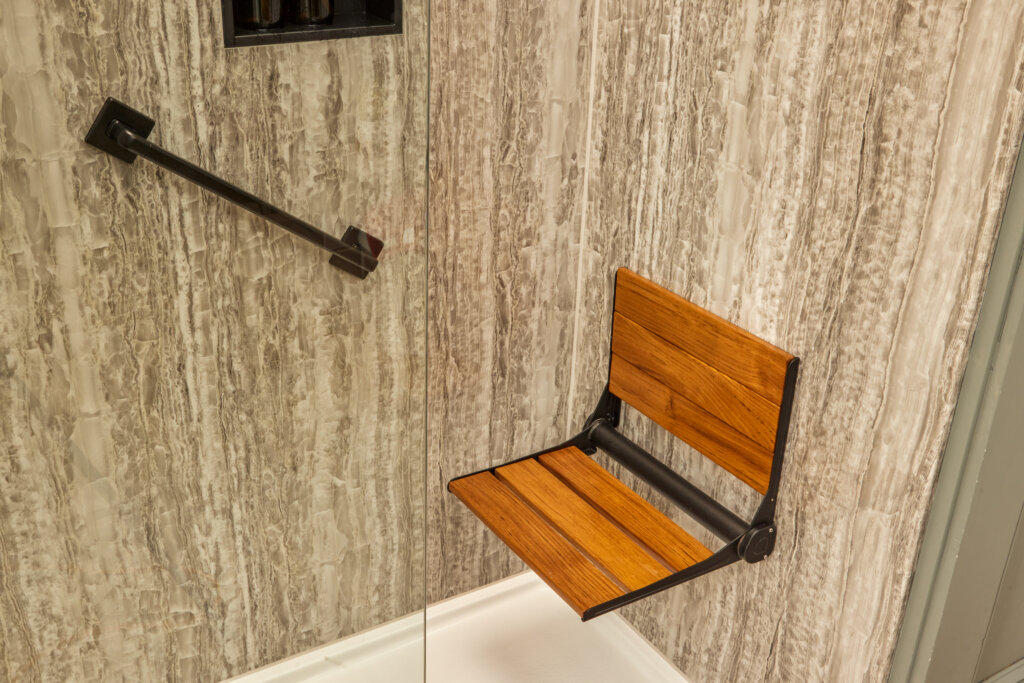Safe and Accessible Bathroom Ideas for People with Low Vision

Designing a safe and accessible bathroom is essential for people with low vision or other visual impairments. Bathrooms can be among the most hazardous areas of the home due to wet surfaces, sharp corners, and poor lighting. But with the right modifications—such as adaptive equipment, smart layout changes, and thoughtful technology—these spaces can be transformed into secure, functional environments that promote comfort and independence.
In this guide, we’ll walk through practical ideas for making your bathroom more accessible for people with low vision, including layout tips, assistive technology for low vision, and product recommendations like walk-in showers and tubs.
Understanding the Needs of People with Low Vision
Low vision refers to a range of visual impairments that are not fully correctable with glasses, contact lenses, or surgery. People with low vision may have difficulty with depth perception, contrast sensitivity, peripheral vision, or glare, all of which can make everyday tasks in the bathroom more challenging.
Bathroom safety becomes even more critical in these cases. Navigating slick surfaces, reaching for fixtures, or finding essential items can increase the risk of falls or injury. That’s why planning for accessibility is not only a matter of convenience—it’s a matter of health and dignity.
Start with the Right Bathroom Layout
Before making product decisions, consider the flow of the bathroom itself. A well-thought-out layout minimizes hazards and supports intuitive movement.
Key layout considerations include:
- Clear, wide pathways to navigate with or without mobility aids
- Minimal clutter and sharp corners
- Consistent flooring with no changes in height or slippery thresholds
- Logical placement of fixtures (sink, toilet, tub, and shower) that match the user’s routine
For more information on universal layout planning, visit our guide on handicap bathroom layouts.

Lighting and Contrast: A Top Priority
Proper lighting can make a huge difference for people with low vision. Bright, evenly distributed illumination reduces glare and shadows, making it easier to move safely and identify objects.
Tips to improve bathroom visibility:
- Use cool white LED lighting with high lumens to enhance contrast
- Add motion sensor lights or voice-activated lighting for hands-free control
- Position lighting at multiple levels—overhead, at the vanity, and near the shower or tub
- Avoid shiny or reflective finishes that create disorienting glare
Visual contrast is also vital. Try to create distinctions between walls, counters, and fixtures using different shades or textures. For example, a dark vanity top on a light cabinet base can make edges easier to identify.
Choose Safe, Accessible Fixtures
Selecting the right bathtub or shower is one of the most important decisions in creating an accessible bathroom for people with visual impairments.
Walk-In Showers
A KOHLER LuxStone shower is an ideal option for people with low vision. These walk-in showers offer:
- Low or no thresholds to reduce tripping hazards
- Slip-resistant flooring
- Contrasting grab bars and shelves for better visibility
- Custom configurations to match the user’s preferences
Walk-in showers offer more space to maneuver, which is especially helpful for people using mobility devices or for those who prefer seated bathing.
Walk-In Tubs
For people who find comfort in soaking baths but need more support, a KOHLER walk-in bath provides:
- A wide, low step-in for safer entry and exit
- Textured floors and built-in handrails
- Ergonomic seating to reduce the risk of slipping
- Optional hydrotherapy features for pain relief and relaxation
A walk-in tub can be an excellent addition for older adults or people with vision loss who want a safe and restorative bathing experience.

Must-Have Bathroom Adaptive Equipment
In addition to larger fixtures, there are several types of bathroom adaptive equipment that enhance safety and usability for people with low vision.
Helpful adaptive equipment includes:
- High-contrast grab bars: Choose bars in bold, contrasting colors for better visibility against the wall.
- Anti-slip floor mats or strips: Apply textured strips to the shower floor and tub for added grip.
- Raised toilet seats with side rails: Makes sitting and standing easier and safer.
- Touch-activated or lever-style faucets: Easier to operate than knobs, especially for those with reduced dexterity.
- Handheld showerheads with adjustable settings: More control and accessibility while seated or standing.
- Talking or beeping scale and thermometer: Examples of assistive technology that make routine tasks more accessible.
Consider Assistive Technology for People with Low Vision
Modern assistive technology for low vision has expanded well beyond magnifiers. Many products now integrate voice control, tactile cues, or audio feedback to help people with visual impairments navigate daily life—including in the bathroom.
Examples of assistive technology for people who are blind or have low vision:
- Voice-controlled smart speakers: Control lighting, music, reminders, or even call for help
- Motion-sensor night lights: Help guide nighttime bathroom visits without harsh light
- High-contrast, tactile labels: Use braille or raised indicators for common items like soap, shampoo, or medicine
- Smart mirrors: Some smart mirrors can integrate audio reminders or accessibility features
These tools don’t just improve convenience—they increase independence.

Tips for Creating a Blind-Friendly Shower Environment
A shower setup should prioritize tactile navigation, temperature safety, and intuitive placement of essentials.
Best practices include:
- Mount shelves and controls at consistent, reachable heights
- Use textured tile or wall panels to signal boundaries
- Choose anti-scald valves to avoid temperature spikes
- Add permanent holders for soap and shampoo to avoid knocking items over
- Consider curbless showers to eliminate changes in elevation
Simple, thoughtful changes like these can help create a more confident and comfortable experience for people with visual impairments.
Involve the Person Using the Space
Every person with low vision has a unique experience, and no two accessibility needs are exactly the same. Whenever possible, involve the person using the space in the design process. Their input will help you determine:
- Ideal fixture heights and placements
- Preferences for textures or materials
- The balance between independence and support
Accessibility is about more than compliance—it’s about enabling autonomy. By customizing a bathroom around an individual’s needs, you can create a space that’s safe, welcoming, and empowering.
Make Safety Stylish
Many people worry that accessible bathroom features will look clinical or out of place. But at Pacific Bath, we believe safety and style go hand in hand.
Our team works with you to design a bathroom that’s not only functional but beautiful. Using premium materials, clean designs, and neutral palettes, we ensure your walk-in tub or shower complements your space, not clashes with it. Whether you’re looking to add a KOHLER walk-in bath, install a walk-in shower, or rework your bathroom layout with adaptive features, Pacific Bath is here to help. Our experts specialize in accessible design that works for real people and real homes. Contact us today to learn more or schedule your free consultation.
Creating a safe and accessible bathroom for people with low vision is one of the most meaningful home improvements you can make. With the right layout, adaptive equipment, and assistive technology, you can significantly reduce risk while improving comfort and independence.


